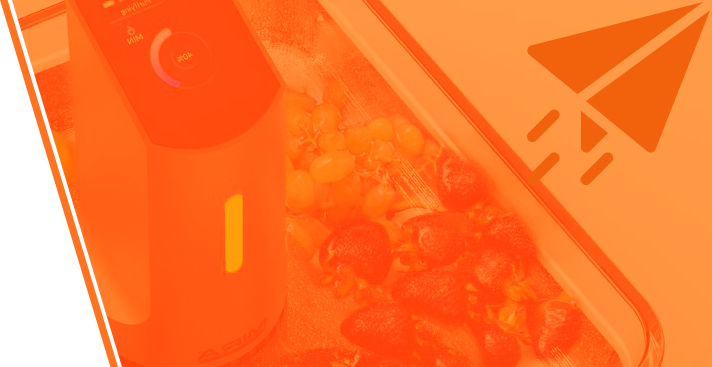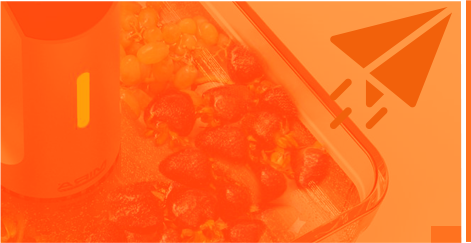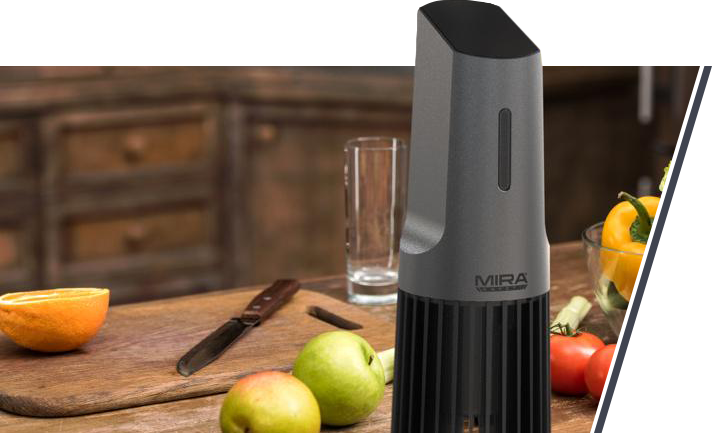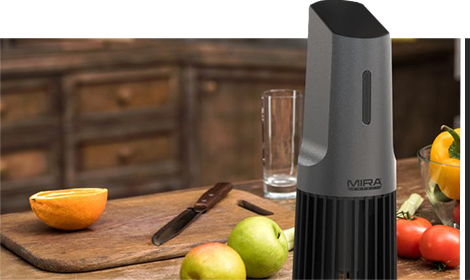Agriculturally, the US is self-sufficient when its agricultural system is firing on all cylinders. In fact, it’s responsible for feeding Americans and large portions of the world. Put into numbers, we produce around 2.2 billion bushels of wheat per year.
Nearly half of that is exported to other nations.
The success of the American farmer hinges on a number of things, and pesticides are one of the methods used to achieve such massive crop yields.
There are metaphorical and literal downstream consequences to pesticide use but producing that much food wouldn’t be possible if we allowed pests to eat it. This is why there is such an emphasis on growing your own food and washing store-bought produce. The widespread use of Malathion insecticides in our produce can have adverse, long-term effects on Americans. Thus it is vitally important we understand how it works, where it is most prominent, and how to combat it.
To learn more about other harmful chemicals such as herbicides that are can be found in your foods, read our article on the dangers of glyphosates here.
Table of Contents
-
01
What is Malathion?
-
02
What are organophosphates?
-
03
What foods are malathion pesticides used on?
-
04
Which pests are malathion insecticide used on?
-
05
Malathion’s Effects on Humans
-
06
Removing Malathion from Produce
-
07
What is Malathion Poisoning?
-
08
Conclusion
What is malathion?
Malathion is an organophosphate insecticide. It’s used in a number of products, and it can be bought over the counter and used in your home or garden. Of course, most people don’t use insecticides in their gardens because of the side effects and residues left on the food they’re growing.

As a pesticide, malathion is well-known and widely used in many industries, residential areas, and our food system. Pest control companies and local government entities that manage insect pest populations use malathion.
What are organophosphates?
Organophosphates like malathion are excellent at killing pests in the home and in agricultural settings.
Organophosphates damage the enzyme acetylcholinesterase. This essential enzyme is responsible for terminating neural signals from the brain at the right time. Much like nerve agents, organophosphates affect the brain's ability to turn certain bodily processes on and off.
The effect is lethal for any living creature that comes in contact with a sufficient dose of these chemicals.
What foods are malathion pesticides used on?
It’s worth noting that of all the foods malathion insecticide is used on, basil plants carry the most residue.
However, this pesticide is used on many types of produce, not just basil.

According to “Malathion in the United States: Harmful Health Effects and Widespread Use” by Earthjustice, cranberries crops have the highest percentage of malathion use. Here are the top six crops for malathion use.
-

Cranberries (70%)
-

Strawberries (55%)
-

Blueberries (40%)
-

Celery (30%)
-

Cherries (25%)
-

Tangerines (25%)

Malathion is also widely used for growing livestock feed. These feed crops are often affected by various pests because the monocrop growing process invites infestation and limits biodiversity.
As pesticides kill everything, such fields lack natural predatory insects. The predators never get a chance to build a strong population, so other pests go unchecked and can decimate acres of agricultural crops.
Insecticide is the best way to combat pests in monocrop agriculture.
Which pests is malathion insecticide used on?
The wide range of insects might surprise you. I was most surprised to find that malathion spray is used in pest control programs worldwide to manage mosquito-borne illnesses.
So, it’s sprayed not just to protect food from pests but also to keep mosquito populations down.
Aphids, leafhoppers, and Japanese beetles are all kept in check by malathion pesticides. Not just in backyard gardens but on large swathes of land nationwide, this insecticide eradicates pests to ensure the best yields possible year after year.

Home growers also use malathion. It can be applied two to four times a year to garden vegetables, ornamentals, and even trees. It is approved for regular use and sold at hardware stores and online.
The USDA has programs that use malathion: the Cotton Boll Weevil Eradication Program and Fruit Fly (Medfly) Control Program. The cotton boll weevil has long plagued cotton production, and malathion is used to keep populations under control in cotton fields.
The fruit fly or medfly, which is short for Mediterranean fly, is a worldwide pest. You’ve probably battled fruit flies in your own home from time to time. These flies are tough to deal with, and their numbers grow along with the available food.
Malathion is a demonstrated killer of insects, but what about humans?
Which pests is malathion insecticide used on?
Nothing lacks consequences, and malathion use is no exception. High levels of organophosphates have been proven to be detrimental to human development.
As we are exposed to more and more of these chemicals, we are at a greater risk of things like:
-

Cancer
-

Neurodevelopmental harm
-

Reproductive toxicity
Where does exposure occur?
Unfortunately, our water supplies take up pesticides just from what washes off from our agricultural system. This is undoubtedly an area of exposure and one that needs to be addressed.
Those who work with and handle malathion have greater exposure because of their proximity to it.
Public pest control programs are another source of exposure. These programs control mosquito populations by spraying residential areas with chemicals like malathion. This stops the spread of mosquito-borne illnesses. Of course, there is downwind exposure and runoff as in any other use.
The fact is, our food and water are very likely to be exposed to this organophosphate in some way.
Removing Malathion from Produce
How do you remove pesticide residues like malathion from your produce? The levels of toxins in our water and soil, by extension, in our food are beyond anything we’ve seen before. We simply cannot ignore this.

From a statistics standpoint, the CDC reports that each year roughly 1 in 6 Americans (or 48 million people) will get sick, 128,000 will be hospitalized, and 3,000 will die due to foodborne diseases. These include highly dangerous and infectious norovirus, salmonella, clostridium perfringens, campylobacter jejuni, and staphylococcus aureus.
To avoid this, we recommend doing more than just running water over your produce. You need to detoxify your food to assure that these threats are eliminated. The DTX-1 Food Detoxifier by MIRA Safety is the most effective and easiest-to-use solution for detoxifying your food to make it safe for your family.

This tool can also detoxify water. If you have any questions or concerns about contamination of your water supply from chemicals like malathion, the DTX-1 Food Detoxifier can rapidly oxidize pesticides on produce and in the water!
The DTX-1 Food Detoxifier has an incredibly easy-to-use LCD touch screen. With its simple, chemical-free process, this handheld machine does wonders to detoxify your food. You can even use it to clean kids' toys, keys, and even jewelry!
Using the MIRA Safety DTX-1 Food Detoxifier

Most of us can’t grow all of our own food. So, what do you do when you get home with a bunch of produce that might have insecticide residue? Well, you can use the DTX-1, and here’s how.
Step 1. Gather the produce you want to clean in a large bowl and fill the bowl with water.
Step 2. Plug in your Detoxifier and submerge the bottom half in the bowl.
Step 3. Using the LCD touch screen select the “Raw Foods” setting. Turn the unit on, and let it do the rest!
The DTX-1 uses a high-powered ultrasonic to remove contaminants. It infuses the water with massive amounts of oxygen molecules that rapidly oxidize pesticides and other harmful compounds.
This tool is truly the most effective and easy-to-use food detoxifier on the market. If you’re concerned about the quality of your food and water, the MIRA DTX-1 needs a place in your home.
What is Malathion Poisoning?
Malathion can be absorbed through the skin, inhaled, or ingested. If you’re exposed to too much, you will get malathion poisoning. It is sold in dust, wet emulsion, spray, and liquid forms.
With malathion available in so many forms, it is easy to see how overexposure and poisoning can occur. Imagine dealing with something like malathion in dust form without a proper respirator.
If you don’t have something like the MIRA TAPR half-face respirator, you could be in serious danger. In fact, you might even want the CM-6M to protect your eyes as well as your lungs from powdered insecticide.
Systemic malathion toxicity due to excess cholinergic stimulation may result from all routes of exposure. The CDC lists the following health effects of overexposure:
Symptoms include:
-

abdominal cramps
-

vomiting
-

diarrhea
-

pinpoint pupils and blurred vision
-

excessive sweating
-

salivation and lacrimation
-

wheezing
-

excessive tracheobronchial secretions
-

agitation
-

seizures (much more common in children than adults)
-

bradycardia or tachycardia
-

muscle twitching and weakness
urinary and fecal incontinence
These symptoms can be fatal if they cause loss of consciousness or coma. In particular, excessive bronchial secretions can cause lethal respiratory depression, and cardiac irregularities can be fatal.
Is Malathion a Carcinogen?
Malathion is categorized as a 2A carcinogen by the International Agency for Research on Cancer. This means that it may cause cancer in humans.
Thus far, I think we have made a solid case for avoiding exposure to malathion.
After studying what the 2A categorization means and what else is in this category, it made me worry about the kind of research being done and the average American’s relationship with carcinogens.
We hear the word carcinogen and get anxious. A 2A categorization means that it is potentially carcinogenic in humans, based on evidence in animal studies.
Conclusion
At the moment, our world requires pesticides to both grow food and manage populations of deadly insects. Malathion insecticide is one of many kinds of poison we use to protect our food and ourselves from pests.
You might be surprised to find out just how common these kinds of poison are. Malathion is an active ingredient in many products that are available to anyone.
Since this insecticide is so widely used and available in numerous industries, it’s easy to see how it gets in our food and water.
So, we can deal with that by ensuring our food and water are properly detoxified. The DTX-1 by MIRA is an easy-to-use and effective tool for just that.




